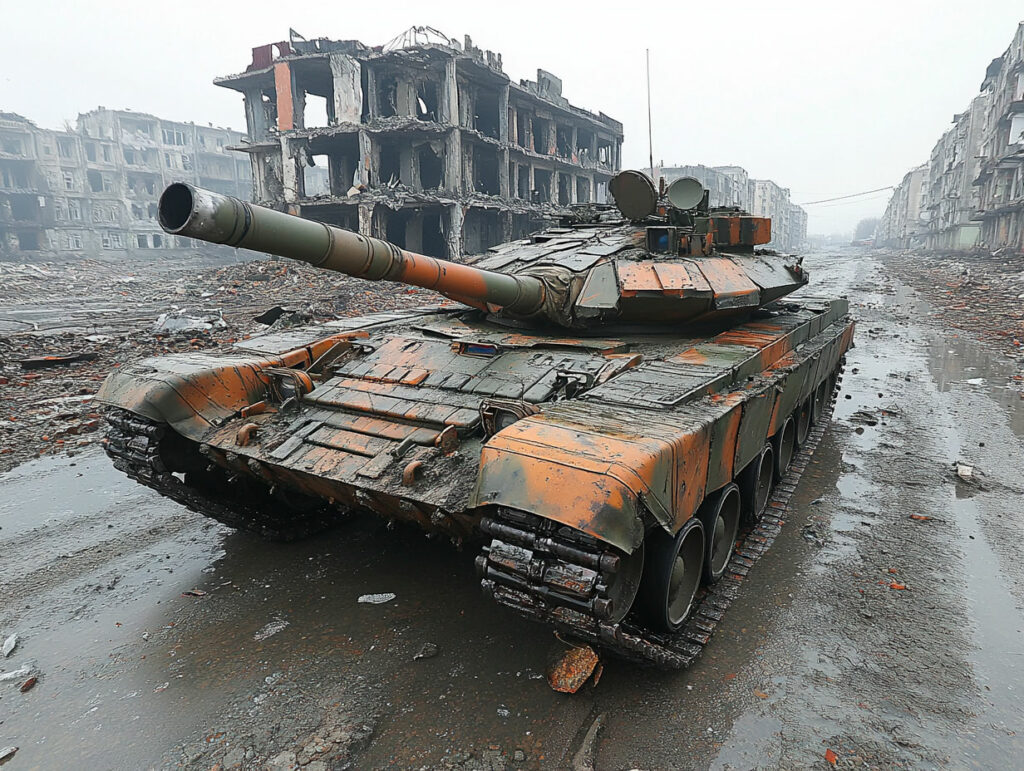
Russia has confirmed for the first time the presence of North Korean soldiers engaged in Ukraine, revealing the implications of a bilateral military agreement.
On April 26, the Kremlin confirmed that North Korean troops are actively participating in Russian military operations in Ukraine, particularly in the Kursk region. This official acknowledgment follows months of systematic denials by Moscow. North Korea’s involvement stems from a strategic partnership agreement signed in 2024 between Moscow and Pyongyang. The consequences of this deployment are manifold: diplomatic implications, increased risk of international sanctions, and a shift in the military balance on the ground. The use of North Korean soldiers also marks a significant shift in current military alliances.
Russia officially admits the presence of North Korean soldiers in Ukraine
On April 26, 2025, during a meeting with Vladimir Putin, Russian Chief of General Staff Valery Gerasimov officially acknowledged the involvement of North Korean troops alongside Russian forces in Ukraine. This announcement concerns in particular the Kursk region, located near the Ukrainian border, where these soldiers are said to have participated in combat operations against the Ukrainian army.
For several months, the Russian authorities had denied any military support from North Korea, describing the allegations as “disinformation.” Gerasimov’s admission therefore directly contradicts the statements made by spokesman Dmitry Peskov, who had denied any concrete military cooperation with Pyongyang.
The Kursk region, which covers approximately 29,800 km², is of strategic importance to Russia as it protects access to the Donbass from the north. The intervention of foreign soldiers in this area confirms the difficulties encountered by Russian forces in maintaining their defense lines. According to data from the British Ministry of Defense, Russian losses in border regions such as Kursk increased by 15% between January and March 2025 compared to the previous year.
This confirmation also raises questions about the quality of the troops involved. By praising their “professionalism” and “heroism,” Gerasimov seems to be seeking to legitimize this external support as credible reinforcement, while several Western military analysts point to a gradual weakening of Russia’s internal mobilization capacity since the end of 2023.

The strategic partnership between Moscow and Pyongyang becomes military
North Korea’s participation is part of a comprehensive strategic agreement signed in 2024 between Moscow and Pyongyang. This treaty, initially presented as a diplomatic and economic cooperation agreement, now includes military clauses that translate into direct engagement on the ground.
The text of this agreement, partially disclosed by certain intelligence agencies, specifies that North Korea undertakes to provide “logistical and human support” in the event of a “common security need.” The current interpretation of this clause allows North Korean soldiers to intervene directly in the Ukrainian theater of operations.
The KCNA (Korean Central News Agency) has confirmed that this military mission is considered a “sacred duty” to strengthen friendship between the two countries. In practice, analysts estimate that this deployment involves between 2,000 and 5,000 North Korean soldiers. This figure remains modest compared to Russian forces, which currently have around 470,000 soldiers mobilized on the Ukrainian front, according to estimates by the Institute for the Study of War (ISW).
This partnership also changes the international perception of North Korea, which until now has been seen as a discreet supporter of Moscow. Open military involvement could have serious diplomatic consequences, including a possible intensification of international sanctions.
International and geopolitical consequences of North Korea’s involvement
The confirmation of the deployment of North Korean troops in Ukraine constitutes a violation of UN Security Council resolutions, in particular Resolution 2397, which prohibits any military cooperation between North Korea and other UN member states.
The US Treasury Department has already announced investigations aimed at sanctioning any entity facilitating the transfer of North Korean personnel or weapons to conflict zones. In response, an extension of economic sanctions against Russia is being considered, particularly in the defense, energy, and secondary banking sectors. Currently, more than 13,000 Russian entities and individuals have been under international sanctions since 2022.
At the regional level, this situation also heightens concerns in Japan and South Korea, which fear an increase in military aggression from Pyongyang. In April 2025, Tokyo announced plans to increase its defense budget by 16% to 7.82 trillion yen (approximately $70 billion).
Finally, North Korea’s official military commitment could lead to a reassessment of nuclear deterrence policies in the Asia-Pacific region, where the United States recently deployed a second nuclear-powered aircraft carrier off the coast of Busan.

Military analysis: what are the consequences on the ground in Ukraine?
From a strictly military point of view, North Korea’s participation does not fundamentally change the strategic balance in Ukraine. The estimated deployment of 2,000 to 5,000 soldiers represents less than 1% of the Russian forces engaged. However, their impact could be localized, particularly in prolonged trench warfare, where physical endurance and strict discipline are hallmarks of North Korean soldiers.
According to reports from the Royal United Services Institute (RUSI), North Korean soldiers are often accustomed to extreme survival conditions and infiltration tactics. In rural Ukraine, where winter and mud make mechanized movement difficult, this type of profile could offer an operational advantage in defensive missions or assaults on fixed positions.
However, their equipment is often obsolete. The majority of North Korean infantry units still use variants of the AK-47 rifle dating from the 1960s, and their personal protection is limited to low-efficiency bulletproof vests, mainly produced in the 1990s.
In terms of logistics, North Korea’s support remains weak, limited to sending personnel and basic 122 mm and 152 mm artillery ammunition compatible with Russian equipment.
In the medium term, the effectiveness of this cooperation will therefore depend on Russia’s ability to integrate and coordinate these foreign troops into its already strained military structures.
War Wings Daily is an independant magazine.